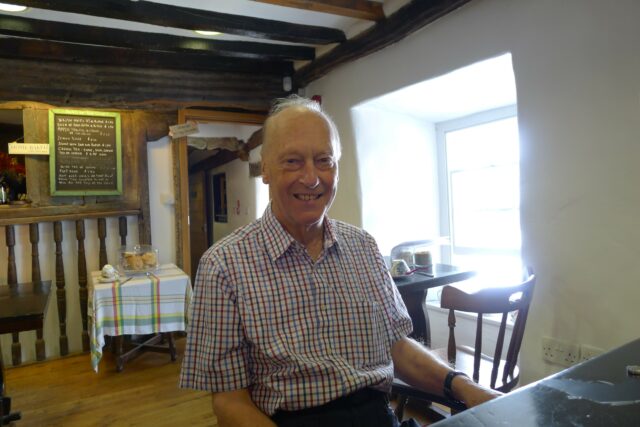By Ian’s son, John
Ian’s arrival at Epsom was founded on tragic circumstances. He received a scholarship, open to the orphan sons of doctors, after his father had been killed in a road accident in Anstruther, Fife, where he was a GP, when Ian was just three months old.
He flourished at Epsom where he became Head Prefect of Wilson as well as acquiring a lifelong passion for choral singing. His schooldays coincided with the Second World War and he recounted tales of viewing the crowds arriving for the Derby in 1939 (ahead of the race’s wartime suspension), the digging of air-raid shelters and the later threat from flying bombs.
These poignant recollections are from the memoir Ian wrote in his retirement: “In my last year at school we had the flying bombs, the V1 and V2. The former you heard flying, and only when the engine stopped did the bomb fall. So you listened and if it stopped you had time to dive for cover. The V2 was a rocket and you did not get the same warning. The V2s were fewer and came after the V1.
“The Normandy Landings in France came in my last summer term. In the Quad was a map of France on which small red flags were placed every day to track the progress of the Allied armies across France and into Belgium.”
After Epsom, Ian read Mechanical Sciences at St John’s College, Cambridge. He played for the College 2nd XV and rapidly gained prominence as a referee, as the dons who usually did this were away at war. He was also co-founder of the Cambridge University and District Referees Society, which still administers refereeing college, university and club rugby in Cambridgeshire.
Ian’s distinguished career as a civil engineer began with Halcrow in 1950. On a travelling fellowship to America, he worked on the Table Rock Dam in Missouri and Donnells Dam in a highly inaccessible canyon in the high Sierra Nevada in California. He later worked for Taylor Woodrow and Balfour Beatty on such projects as Dungeness ‘A’ Nuclear Power Station, Mangla Dam (Pakistan), Kainji Dam (Nigeria), the M25/A1(M) intersection at South Mimms, and deep station excavation and tunnelling for the Jubilee Line at Bond Street. He published numerous articles in professional journals and gave a prestigious presentation on the properties and behaviours of rock-fill dams at an International Congress on Large Dams.
Following a downturn in the civil engineering sector in the late 70s/early 80s, Ian reinvented himself as a Maths teacher at schools in London. His outside interests included an 80-plus year choral singing career as a bass, including a stint in the Bach Choir, and he was a stalwart of the London Society of Rugby Referees.
In retirement he self-published five books of travel and theological writings. He was married to Hilary, who predeceased him, for 59 years. They had two children, Catherine and John. Ian died on 30 November 2023, aged 97.





